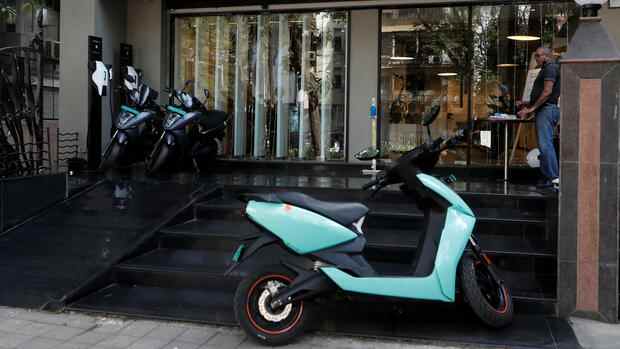Bangkok Tesla boss Elon Musk has been flirting with entering the Indian market for years – but on his own terms. The multi-billionaire is demanding generous tax breaks in order to export his electric cars to India – and only when this business is successful does he want to think about his own production in the country. With around 1.4 billion inhabitants, the second largest country in the world by population has not yet thought of fulfilling the conditions.
India’s Prime Minister Narendra Modi flatly rejects Musk’s request. It doesn’t help the emerging market if the top ten thousand can get their high-priced Teslas a little easier. India, which will already have more inhabitants than China in the coming year, needs solutions for the mass market.
Also for the breakthrough of electric mobility. The government has recognized that this requires a local value chain that adapts to the requirements of the Indian market. Luxury vehicles from a US manufacturer, for which several average annual salaries have to be paid in India, are not part of this chain.
India’s focus on cheap electric vehicles instead of status symbols is successful: The market is growing rapidly and is thus becoming a model for developing and emerging countries worldwide. India shows that the turnaround in transport can also succeed in markets with low household incomes.
Top jobs of the day
Find the best jobs now and
be notified by email.
For more than a decade, it has been possible to observe that different routes are needed than in rich industrialized countries: that’s how long electric rickshaws – three-wheel taxis – have been an important part of local public transport in the big cities.
Battery subscription
Apart from an electric motor, the first models hardly have anything in common with Musk’s luxury cars: Instead of using powerful lithium-ion batteries, they used a lead-acid battery that takes eight hours to charge and has a service life of just half a year. The maximum speed is easily exceeded by a sporty cyclist. But despite the restrictions, the e-tricycles found their market: In operation, they are significantly cheaper than filling up the tank every day.
electric boom
430,000
electric vehicles
were sold in India in the past fiscal year.
In the meantime, India’s rickshaws have also arrived in the lithium-ion age. The problem that the acquisition costs of modern high-performance batteries are far too high for many Indians has been solved with subscription models. They allow customers to exchange empty batteries for full ones at the provider’s stations for a monthly fee. The whole thing only takes a few minutes and is particularly worthwhile for taxi drivers, who do not have to accept any business losses during the loading time.
This approach is also gaining popularity among moped drivers. The result is an electromobility boom, with which the country is increasingly moving towards the global top, despite problems such as a poorly developed charging infrastructure.
In the last fiscal year, which ended in March, 430,000 electric vehicles were sold in India – an increase of more than 300 percent compared to the previous year. Almost 360,000 electric cars were newly registered in Germany in 2021, and around 490,000 in the USA.
In contrast to industrialized countries, however, only a fraction of India’s electric fleet consists of passenger cars: the vast majority of electric motors are in operation on India’s roads in three-wheelers and two-wheelers. According to Indian media, the number of tricycles sold with electric drives exceeded those with combustion engines for the first time in May.
In the weekly column we take turns writing about innovation and economic trends in Asia.
(Photo: Klawe Rzeczy)
The rapid growth is not without problems, recently there have been several fatal incidents after battery fires. Nevertheless, the sales figures continue to rise.
The manufacturers convince – also with the help of state subsidies – especially with the price. The e-moped producer Ola Electric recently presented its cheapest model to date with a range of 130 kilometers, which is available for around 1200 euros. On the first day of sale, the company already reported 10,000 orders.
For the coming year, the company promises further cost reductions if it produces the lithium-ion batteries itself in India. This should also increase security.
The potential for climate protection is huge: According to the International Energy Agency, two and three-wheelers account for around half of fuel consumption in markets like India – the emission savings would be correspondingly large if the fleet were electrified.
The market in this segment is currently still clearly dominated by China, where there are also comparatively cheap e-vehicles. However, India is making great efforts to undercut China as a location on the cost side. Several start-ups are now offering solutions for converting conventional mopeds into e-scooters for a few hundred dollars. This ingenuity is much more important for India’s e-revolution than Elon Musk.
More: India is courting the chip industry with billions.
